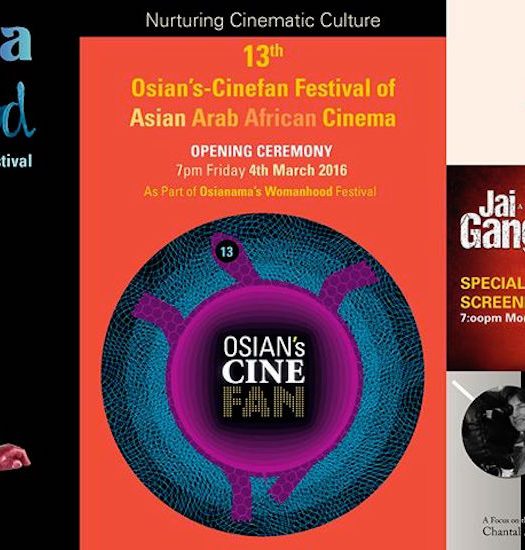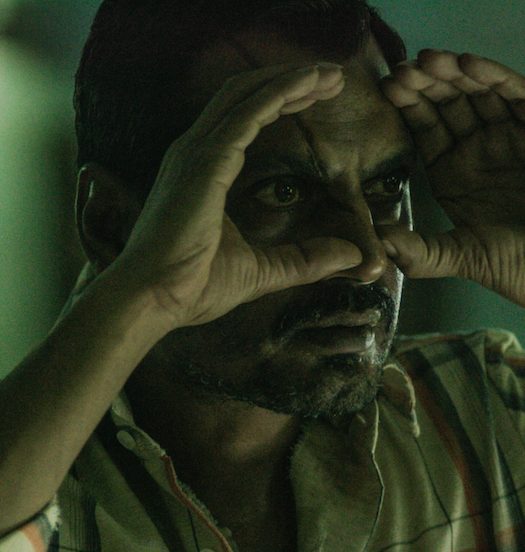Exclusive: Making of Mirzya with DOP Pawel Dyllus
Polish Cinematographer Pawel Dyllus is known to have never shot a film that was non-Polish. But he made an exception for Director Rakeysh Omprakash Mehra’s grand love story, Mirzya. Here Dyllus shares his choice of equipment for the film, his love for anamorphic lenses and the experience of shooting with the Angénieux Optimo Anamorphic 56-152.

Pawel Dyllus
During the preparation of Mirzya, what were the constraints, the requirements and the artistic choices that were imposed by your director? What kind of look were you’ll working towards?
It’s always hard to say what you are looking for. It’s much easier to say what you are not looking for!
The pre-production process of Mirzya was very interesting. The period of elaborating your inspirations & the vision of the film should last for a substantial amount of time, otherwise it’s impossible to make decisions in conscious way. During the pre-production process everything needs time, and this includes giving time to choosing the correct lenses as well. Therefore after reading script & after a few talks with Rakeysh Omprakash Mehra, I asked the ROMP Production to organize lens tests for me. In next few days I had in front of me almost 30 lenses – anamorphic & spherical and 2 cameras to test.
During the initial discussions with Rakeysh Mehra, we agreed that Mirzya should be shot in 1:2,35 aspect ratio. We were sure that we wanted to create a special look for our movie. After that statement I started testing lenses for the movie. Immediately after shooting an Armenian movie Bari Luys, I came to India to prepare Mirzya. In Armenia, with the director Anna Arevshatyan, we had also decided to shoot with an aspect ratio of 1:2,35 but we achieved this using spherical lenses. The effect with spherical lenses is passable, but something inside you is constantly screaming that there is full 4:3 sensor in your camera, which is waiting for anamorphic lenses!
Could you please explain why you chose to shoot Mirzya in anamorphic?
After my previous experiences of shooting two features on spherical lenses with a 1:2,35 aspect ratio, I was very interested in finding a new cinematic quality of vividness for my photography in digital format. I’ve always found spherical lenses, especially new lenses, being too sharp for my eye. That’s why usually I prefer to use older lenses, which give a little bit of natural softness by themselves. For example, in my digital still camera, I have an old Schneider-Kreuznach bayonet lens which has only a 4 aperture leafs. However, old spherical wide lenses can be very problematic because of their unpleasant aberration on the edges of the frame. The same problem sometimes is even worse in anamorphic lenses.
Since the first time that I used anamorphic lenses for one of my Polish film-school short films, I have fallen absolutely in love with the bokeh of anamorphic lenses. The horizontal gleam and extraordinary film look is magical! In today’s digital world, for me the anamorphic format is a salvation for filmy look. Mirzya, in its full glory, seemed like a great opportunity to use full frame and anamorphic lenses, to give the story distinctive filmy look.
In general, what are the main criteria that define your choice of lenses on a project?
As cinematographer I try to approach every movie in a different way. Of course I have my favourite “settings”: for smaller-films, I like to open the aperture as much as I can, especially in interior scenes. I really like wide open bokeh and vividness. Of course this is a nightmare for my focus puller, but he is used to this now! For high-budget films when fewer cameras are used and turnaround of the work needs be faster, I look for lenses which give me as much vividness as I can get with 4-5.6 apertures. In this case, zoom lenses are indispensable.
Can you throw more light on your approach between prime lenses and zoom lenses?
Long time ago I learnt one key principle: no matter which lens it is – new, old, fresh adjusted, zoom or even prime, you have to test it yourself otherwise the shoot can become a nightmare. I use this principle with every lens: whichever primes and zooms that I want to work with. Generally, I prefer working with prime block lenses, however the comfort of having one good zoom lens is invaluable. To find these lenses, I reiterate that my approach to testing the lenses before a shoot, is extremely important.

With Rakeysh Omprakash Mehra during the making of Mirzya
You are the first to shoot with this new anamorphic lens in India. Could you please give us your impression regarding this lens?
When I first tested the 56-152 lens, I was very surprised that it was possible for an anamorphic zoom to be so light! It was hard to believe that it weighs only 2.2 kgs – less than the other anamorphic prime block lenses. I was also amazed that an anamorphic lens with such a wide range of 56-152, could have the ability to focus at a close distance of (MOD) – 63 cm (2 ft. 1 in.)! When I used this lens in India (October 2014), I couldn’t even get a block anamorphic lens with such close Focus. When I started to shoot Mirzya, I was really in love with the 56-152 because of one more reason: there was no breathing during a change of focus. With anamorphic lenses, “breathing” is generally quite a big issue. Due to the manner of construction of this 56-152 lens, this problem has been almost completely eliminated, which is great.
On a scale from 0 to 10, where 0 is the worst and 10 is the best, could you please rate the Optimo anamorphic 56-152? Could you please develop your point of view, and tell us what would you change/add/remove on this lens to improve it? Perfection is in details!
I would mark 56-152 at 8 points.
Big advantages of that lens are: light weight, really close focus, no breathing and the most important thing for me – amazing vividness of an anamorphic lens. Initially, I thought that the minimum aperture of that lens, which is 4T will be a problem. Of course it would be great to have at least 2.8 T, however, shooting scenes on a focal length longer than 80mm with less than 4.0T does not make sense for me when I shoot anamorphic. Instead of more wide open than 4.0 T aperture, the Angénieux 56-152 lens provides no aberration and no distortion in the frame during any aperture value of the zoom range.
Have you faced any issue with this lens (even minor)?
No, it was great to work with that lens.
Could you please give us your point of view regarding this Angénieux anamorphic lens compared to other anamorphic lenses? Is there any specificities you particularly enjoyed?
Hmm. Good question.
In the other anamorphic lenses that I have worked with, the biggest issue has been distortion and aberration. It would seem that distortion is an issue mostly in wide lenses, like 25, 35, 50, but few days ago I tested a brand new anamorphic prime block lenses where a 100mm lens had major problem with barrel distortion. After such a good experience with the 56-152 lens, this came as a big surprise to me.
What are the main advantages brought by the Optimo 56-152 on the set? What are its limits? Is there any particular scene that you feel you could not have done without this zoom?
Mirzya has quite a lot of long Steadicam master-shots. The 52-156 brought a lot of comfort when we were shooting this film, especially in helping ease the weight of the equipment for the Steadicam operator! For my Polish crew: focus puller Radek Kokot, Steadicam operator Adam Mendry & camera operator Przemek Niczyporuk, it came as a pleasant surprise that an anamorphic zoom could be so light and easy to use. This lens was also our number one choice, when we were taking shots that required a longer focal length than 100mm. During the jimmy jib shots, the 52-156 lens was a crucial requirement for me. It was so convenient to just put one lens on jib and shoot the same drama with different focal lengths!

Still from Mirzya
Which equipment have you used with the Optimo 56-152? Camera? Primes? Other zoom lens?
During the time of the shoot, I didn’t have too many options of lenses. In October 2014, there were only a few sets of anamorphic lenses available in the entire country. The film Mirzya, is a story that takes place in multiple storytelling dimensions. Therefore, after my lens tests, in the first part of the story I decided to use a set of 4 Hawk V-Lite block prime lenses – 35, 55, 80 & 110. For some cases, I also selected the 24mm Anamorphic Elite lens. However, if something wider than 35mm anamorphic was needed, then most of the time I used Ultra Prime Spherical Lenses. I did this because of the huge distortion that you get in anamorphic wide lenses. Distortion is not the best thing to have if it is not required in your cinematic storytelling.
Apart from this, I wanted to be sure that if there would be a requirement of shooting in very low light conditions then I would have the option and means to be able to shoot such shots. That’s why having an Ultra Prime lens set as backup was something that I found was absolutely essential. For some scenes I also used the Hawk Zoom 300-900mm and Otto Nemenz 300-1200 Anamorphic zoom. To shoot the second part of the story of Mirzya, I have chosen a new set of Master Prime Zeiss Anamorphic lenses: 35, 50, 75 & 100mm. Angénieux 56-152 is looking amazing with that anamorphic block set. This shoot is still pending.
What were the most extreme conditions you had to face on the set till now and how did the Optimo 56-152 respond to that? What particular moments will you remember most from the shooting of Mirzya?
We had a lot of extreme shooting conditions during the shoot. A few of them, such as shooting in Ladakh – which is a critical part of the movie, is still yet to start. Up till now we have had a lot of rigging shots: the Steadicam on an ATV was our main equipment during that part. The Optimo 56-152 respond very well to our needs of quick Steadicam & ATV work.




August 12, 2015
Fantastic interview….detailed technically sound questions..keep doing good job.thanks.